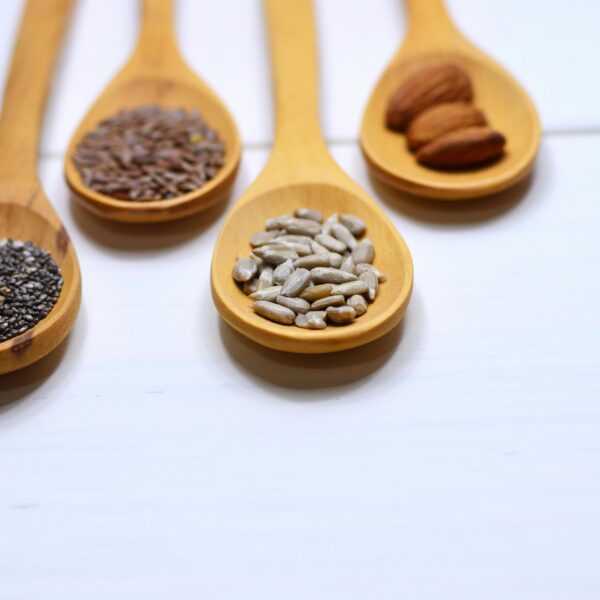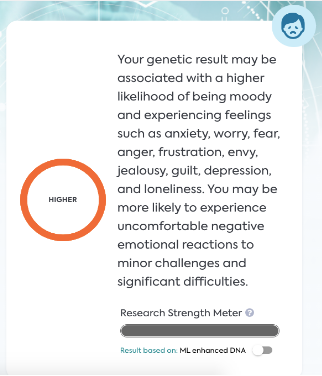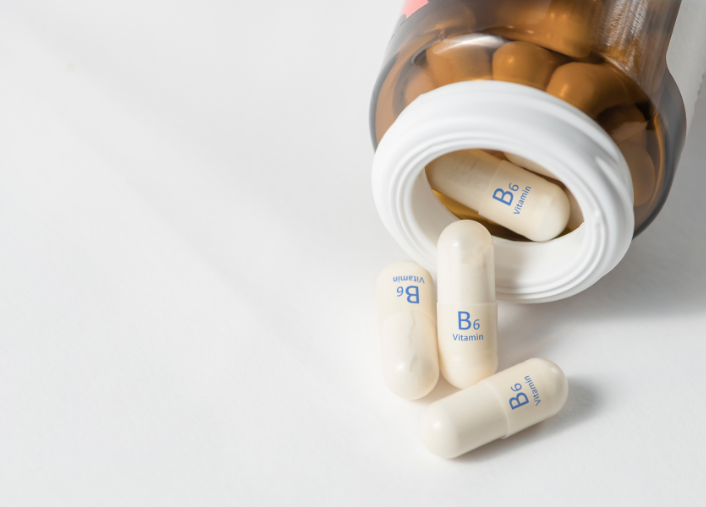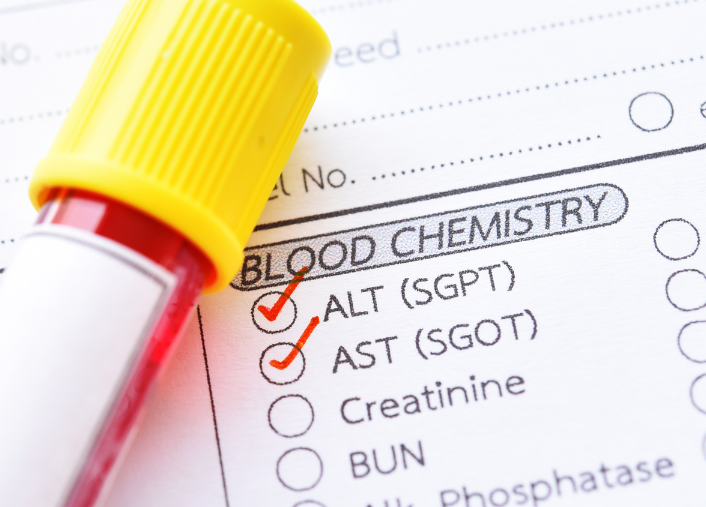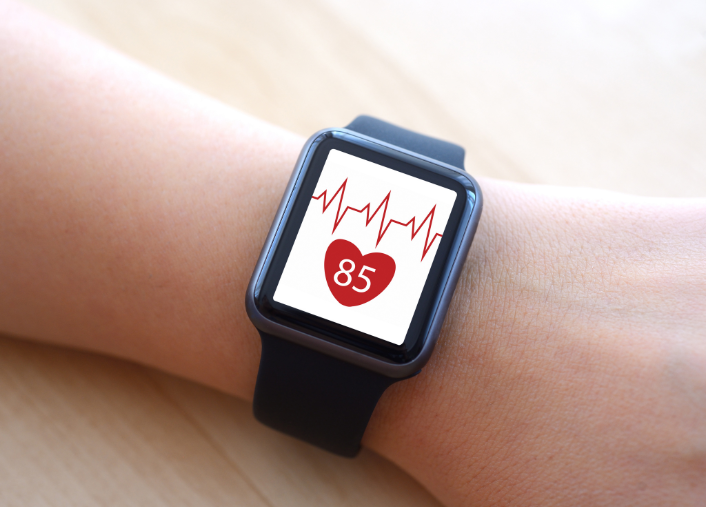Minerals Matter: What Genetics Say About Your Magnesium Levels
Aira
on
February 21, 2024
What is Magnesium?
Picture this scenario: Within the intricate tapestry of your DNA lies a code that not only dictates your eye color and hair texture but also the mix-and-match of essential minerals within your body. Among these vital elements, magnesium stands as a linchpin, playing a pivotal role in numerous biochemical processes crucial for your well-being.
Magnesium, denoted by the symbol Mg on the periodic table, is a versatile alkaline earth metal that participates in over 300 enzymatic reactions within the human body. Beyond its structural role in bones and teeth, magnesium is a co-factor in processes governing energy production, muscle function, and nerve transmission. This unassuming mineral is essential for DNA and RNA synthesis, regulating blood pressure, and sustaining cardiovascular health.
Intriguingly, recent scientific inquiries delve into the intricate relationship between our genetic makeup and magnesium levels. How does your genetic code influence the absorption, distribution, and utilization of magnesium? Read on to delve into the realm of genomics and mineral homeostasis as we uncover the secrets encoded in your DNA that govern the levels of this indispensable mineral.

Where Can You Find Magnesium?
Magnesium, a critical mineral for human health, is widely distributed in nature and can be found in various food sources, as well as in water and supplements. Its presence is essential for numerous physiological functions, making an understanding of dietary sources crucial for maintaining optimal magnesium levels.
Dietary Sources
Rich food sources of magnesium include leafy green vegetables like spinach and kale, as well as nuts and seeds, such as almonds, sunflower seeds, and pumpkin seeds. Whole grains, legumes, and certain fruits, like bananas and avocados, also contribute to magnesium intake. Seafood, particularly fatty fish like mackerel and salmon, adds to the dietary magnesium pool.
Water
Water, both tap and bottled, can be a source of magnesium, though the concentration varies geographically. Hard water, containing higher mineral content, may contribute more to daily magnesium intake. However, relying solely on water for magnesium may not suffice, as the amounts can vary significantly.
Supplements
For individuals struggling to meet their magnesium needs through diet alone, supplements are available. Magnesium supplements come in various forms, such as magnesium citrate, oxide, and glycinate, each with distinct absorption rates and bioavailability.
Understanding the diverse sources of magnesium is crucial for maintaining a balanced and health-supportive diet, ensuring the body has an ample supply of this vital mineral for its myriad functions.
You may also like: A Walkthrough of the LifeDNA Vitamins & Supplements Report
Why Does the Body Need Magnesium?
Magnesium, an essential mineral, plays a fundamental role in numerous biochemical processes critical for maintaining overall health. Acting as a cofactor in more than 300 enzymatic reactions, magnesium is involved in energy metabolism, where it facilitates the conversion of food into energy through ATP synthesis. Its presence is integral to muscle function, contributing to muscle contraction and relaxation.
Beyond its muscular involvement, magnesium is a key player in the regulation of the cardiovascular system, influencing blood pressure and supporting the rhythmic beating of the heart. The mineral is also essential for the structural integrity of bones and teeth, working in tandem with calcium. Additionally, magnesium plays a vital role in DNA and RNA synthesis, contributing to genetic and protein formation.
Magnesium’s impact on the nervous system extends to neurotransmitter regulation, influencing the transmission of signals between nerve cells. This mineral also contributes to the maintenance of electrolyte balance and cellular homeostasis. Given its involvement in such diverse physiological functions, an adequate supply of magnesium is crucial for overall well-being, and its deficiency can lead to a range of health issues, emphasizing the significance of understanding and maintaining optimal magnesium levels in the body.
What Affects Magnesium Levels in the Body?
Various factors influence magnesium levels in the body, impacting its crucial role in physiological functions. From genetic factors to dietary intake, understanding the determinants of magnesium balance is essential for maintaining optimal health.
Genetic Factors
In a study involving over 15,000 individuals of European descent, researchers investigated the genetic factors influencing magnesium levels in the serum. Analyzing a total of 2.6 million genetic variants, they found six genomic regions associated with serum magnesium concentrations: near genes MUC1, SHROOM3, TRPM6, DCDC5, ATP2B1, and PRMT7.
The study also attempted to replicate these findings in over 8,400 additional individuals, with five of the six identified genetic variants showing evidence for replication. These variants were associated with clinically defined hypomagnesemia, a condition characterized by low magnesium levels. Additionally, two of the variants were linked to kidney function, and one was associated with fasting glucose levels.
Genes related to magnesium transport, such as CNNM2, CNNM3, and CNNM4, were also found to be associated with magnesium concentrations. Notably, common variants in CNNM2 were linked to magnesium levels in the study.
Overall, research studies like the one featured here provide insights into the genetic basis of magnesium regulation in the body, offering potential avenues for understanding and addressing conditions related to magnesium imbalance. Further exploration of associated genomic regions and genes may deepen our understanding of magnesium homeostasis and its impact on health.
Environmental Factors
Magnesium, an essential mineral for human health, is subject to a delicate equilibrium influenced by both internal and external factors. While dietary intake plays a significant role, environmental factors can also impact magnesium levels in the body.
- Dietary Intake: The primary source of magnesium is dietary consumption. Individuals with diets rich in magnesium-containing foods, such as leafy green vegetables, nuts, seeds, and whole grains, are more likely to maintain adequate magnesium levels. Conversely, diets high in processed foods and low in magnesium-rich sources may contribute to deficiencies.
- Water Quality: The magnesium content in drinking water varies geographically. Individuals consuming “hard water,” which contains higher levels of magnesium and other minerals, may receive a notable portion of their magnesium intake from water. Conversely, those with access to “soft water” may obtain less magnesium from this source.
- Soil Composition: The magnesium content in soil directly influences the magnesium content in plants. Plants absorb magnesium from the soil during growth. Therefore, the mineral content of the soil in which crops are cultivated affects the magnesium levels in the food harvested from that soil. Regions with magnesium-deficient soil may produce crops with lower magnesium content.
- Agricultural Practices: Modern agricultural practices, including using certain fertilizers and pesticides, can impact soil composition and, consequently, the magnesium content in crops. Intensive farming practices that deplete soil nutrients without adequate replenishment may contribute to a reduction in magnesium levels in the food supply.
- Medications and Supplements: Certain medications and supplements can interfere with magnesium absorption and utilization. For instance, diuretics, commonly prescribed for conditions like hypertension, can increase urinary excretion of magnesium. Additionally, high doses of zinc and calcium supplements may compete with magnesium for absorption in the gastrointestinal tract.
- Alcohol Consumption: Excessive alcohol consumption can negatively impact magnesium status. Alcohol interferes with magnesium absorption in the intestines and increases urinary excretion. Chronic alcoholism, in particular, is associated with a higher risk of magnesium deficiency.
- Chronic Stress: Prolonged exposure to stress can lead to increased magnesium excretion and utilization in the body. Stress activates the release of stress hormones, such as cortisol, which can contribute to magnesium loss through urine. Individuals experiencing chronic stress may be at a higher risk of magnesium deficiency.
- Physical Activity and Sweating: Regular physical activity and intense exercise can lead to increased magnesium requirements. Sweating, a natural response to physical exertion, results in the loss of electrolytes, including magnesium. Athletes and individuals with high levels of physical activity may need to ensure adequate magnesium intake to compensate for these losses.
Understanding the intricate interplay between environmental factors and magnesium levels is crucial for maintaining optimal health. Addressing dietary habits, considering water sources, and being aware of lifestyle factors can contribute to a comprehensive approach to magnesium management and support overall well-being.
What are the Benefits of Magnesium?
Magnesium, an essential mineral, offers a plethora of benefits for overall health and well-being, influencing various physiological functions within the body.
- Energy Production: Magnesium is a cofactor in ATP synthesis, the primary energy currency of cells. Its presence is crucial for converting food into energy, supporting metabolic processes and cellular function.
- Muscle Function: Magnesium plays a vital role in muscle contraction and relaxation. Adequate magnesium levels contribute to optimal muscle function, helping to prevent cramps and spasms.
- Cardiovascular Health: Magnesium is involved in regulating blood pressure and maintaining the electrical stability of the heart. Studies suggest that sufficient magnesium intake may contribute to a lower risk of cardiovascular diseases.
- Bone Health: Magnesium works synergistically with calcium in bone formation and mineralization. It is essential for maintaining bone density and preventing osteoporosis.
- Nervous System Support: As a regulator of neurotransmitters, magnesium influences nerve transmission and function. It plays a role in managing stress and promoting a healthy nervous system.
- DNA and RNA Synthesis: Magnesium is a co-factor in DNA and RNA synthesis, contributing to genetic and protein formation. This underscores its importance in cellular growth and repair.
- Electrolyte Balance: Magnesium helps maintain electrolyte balance, working with other minerals like potassium and sodium. This balance is crucial for proper cellular function.
- Insulin Sensitivity: Magnesium plays a role in insulin function, promoting insulin sensitivity. Adequate magnesium levels may contribute to better blood sugar regulation, reducing the risk of type 2 diabetes.
- Anti-inflammatory Properties: Magnesium exhibits anti-inflammatory effects, influencing cytokine production and immune responses. This property may contribute to the prevention of chronic inflammatory conditions.
- Mood Regulation: There is evidence suggesting a link between magnesium levels and mood regulation. Magnesium may have a positive impact on conditions like anxiety and depression.
Ensuring sufficient magnesium intake through a balanced diet, supplementation when necessary, and mindful lifestyle choices is vital for harnessing these benefits. While magnesium’s importance in health is evident, individual requirements may vary, highlighting the importance of personalized approaches to magnesium optimization.
What is the Suggested Daily Intake of Magnesium?
The recommended daily intake of magnesium varies based on factors such as age, gender, and life stage. The Recommended Dietary Allowance (RDA) set by health authorities provides general guidelines for magnesium intake to meet the needs of the majority of the population.
Young Individuals
Children and adolescents have varying RDAs, ranging from 65 milligrams for infants to 400 milligrams for adolescent males aged 14 to 18. Adolescent females in the same age group have an RDA of 360 milligrams.
Adults
For adult men aged 19-30, the RDA for magnesium is 400 milligrams per day, while men aged 31 and older have a slightly higher RDA of 420 milligrams per day. Adult women aged 19 to 30 are advised to consume 310 milligrams daily, and those aged 31 and older should aim for 320 milligrams.
Pregnant Individuals
Pregnant women have higher magnesium requirements, with an RDA of 350-360 milligrams, emphasizing the mineral’s importance during gestation. Lactating women are also recommended to increase their magnesium intake to 310 to 320 milligrams per day to support maternal and infant needs.
Individual magnesium needs may differ based on factors like health conditions, medications, and lifestyle. While obtaining magnesium through a balanced diet rich in green leafy vegetables, nuts, seeds, and whole grains is ideal, some individuals may benefit from supplementation under the guidance of healthcare professionals. Striking a balance between dietary intake and potential supplementation is key to ensuring individuals meet their magnesium requirements for optimal health.
Why is Magnesium Sulfate Given During Pregnancy?
Magnesium sulfate is commonly administered during pregnancy for specific medical indications, primarily to address conditions that may pose risks to both the mother and the unborn child. One significant application is the prevention and treatment of eclampsia, a severe and potentially life-threatening complication of preeclampsia, characterized by seizures in pregnant women.
Magnesium sulfate acts as a neuroprotective agent, dampening excessive neuronal activity and preventing seizures. Its precise mechanism is not fully understood, but it is believed to involve calcium channel blockade, reducing the likelihood of excitatory neurotransmitter release. Additionally, magnesium sulfate helps to lower blood pressure, another crucial factor in managing preeclampsia.
Furthermore, magnesium sulfate administration is associated with a reduced risk of preterm birth in cases of preterm labor. The mineral’s tocolytic properties, influencing smooth muscle function, contribute to its effectiveness in delaying premature labor.
Despite its established benefits, the use of magnesium sulfate during pregnancy is carefully monitored, and healthcare professionals assess individual patient needs, considering potential side effects. It exemplifies the delicate balance in maternal-fetal medicine, where magnesium sulfate plays a critical role in safeguarding the health of both mother and baby in specific high-risk scenarios.
Ways to Maintain Good Magnesium Levels
Maintaining optimal magnesium levels is crucial for overall health, as this essential mineral plays a fundamental role in numerous physiological functions. From energy metabolism to muscle function and cardiovascular health, adequate magnesium is essential. Here are some evidence-based ways to ensure your magnesium levels stay within the recommended range.
Dietary Sources
Incorporating magnesium-rich foods into your diet is the most natural way to ensure sufficient intake. Leafy green vegetables like spinach and kale, nuts and seeds (such as almonds and pumpkin seeds), whole grains, legumes, and certain fish (like mackerel and salmon) are excellent sources. Consuming a diverse and balanced diet helps cover magnesium needs from various food groups.
Magnesium Supplements
For individuals with specific dietary restrictions, or health conditions, or those at risk of magnesium deficiency, supplements can be considered. Different forms of magnesium supplements are available, including magnesium citrate, oxide, and glycinate. Consultation with a healthcare professional is advisable to determine the appropriate form and dosage, as excessive magnesium supplementation can lead to adverse effects.
Hydration with Magnesium-Rich Water
Drinking water with an adequate magnesium content contributes to daily intake. However, the magnesium content in water varies geographically. Hard water, which contains higher mineral concentrations, can be a valuable source. Regular water quality assessments and, if needed, choosing water sources with suitable magnesium levels can contribute to maintaining adequate intake.
Limiting Alcohol and Caffeine
Excessive alcohol consumption and high caffeine intake can contribute to magnesium loss through increased urinary excretion. Moderating alcohol and caffeine consumption helps minimize this loss and supports magnesium balance. Hydration with water also becomes crucial to counteract potential diuretic effects.
Managing Stress
Chronic stress can lead to increased magnesium excretion, potentially contributing to deficiency. Engaging in stress-reducing activities, such as mindfulness, meditation, or regular exercise, can positively impact magnesium levels. These practices help regulate the hormonal responses associated with stress, promoting magnesium conservation.
Healthy Fats and Protein Intake
Including sources of healthy fats and an adequate intake of protein in your diet may positively influence magnesium absorption. Foods rich in omega-3 fatty acids, such as fatty fish and flaxseeds, may enhance magnesium utilization. Additionally, ensuring sufficient protein intake supports magnesium absorption in the digestive tract.
Regular Monitoring and Medical Consultation
Periodic monitoring of magnesium levels, especially for individuals at risk or with specific health conditions, is essential. Conditions like gastrointestinal disorders or the use of certain medications may affect magnesium absorption and retention. Consulting with healthcare professionals ensures personalized guidance for maintaining optimal magnesium status.
Balancing dietary choices, considering supplemental needs when necessary, and adopting a lifestyle that supports magnesium retention are key elements in sustaining good magnesium levels. As individual requirements vary, personalized approaches, guided by healthcare professionals, ensure that magnesium intake aligns with unique needs for overall health and well-being.
LifeDNA’s Magnesium Report
Unlock the secrets to a healthier you with LifeDNA’s Magnesium Trait Report. Our scientifically-backed and comprehensive Vitamins and Supplements Report delves into your unique genetic code to reveal personalized insights about your magnesium needs. Understanding how your body processes and utilizes magnesium is key to optimizing your well-being.
Wellness is a daily commitment, and our genetic trait reports empower you to make informed choices tailored to your genetic profile. Explore the Magnesium Trait Report to discover factors influencing your magnesium levels, helping you make lifestyle adjustments for a healthier, more balanced life.
LifeDNA also offers an array of specialized reports, including the CoQ10 Levels, Copper Levels, and Vitamin E Levels trait report, each providing personalized insights into your unique genetic requirements. With seven main report categories and almost 200 trait reports under Vitamins & Supplements, Wellness, Nutrition, Fitness, Sleep, and Personality and Cognition, LifeDNA provides a holistic view of your genetic wellness landscape.
Embark on your wellness journey today – subscribe to LifeDNA and gain access to a wealth of personalized genetic insights. Take control of your health, armed with the knowledge of how your unique genetic code influences your well-being. Your journey to a healthier, more vibrant life starts today.
Summary
- Magnesium (Mg) plays a pivotal role in 300+ enzymatic reactions, influencing energy production, muscle function, nerve transmission, DNA synthesis, and cardiovascular health.
- Recent studies delve into the intricate relationship between genetics and magnesium levels, uncovering how your genetic code influences absorption, distribution, and utilization.
- Magnesium is abundant in leafy greens, nuts, seeds, whole grains, and seafood, magnesium-rich foods are crucial for optimal physiological function.
- Magnesium supplements in various forms offer an option for those with dietary challenges, ensuring a balanced magnesium intake.
- The suggested daily intake of magnesium varies by age, gender, and life stage. Ranges span from 65 mg for infants to 420 mg for adults.
- Balancing diet, supplements, and lifestyle choices ensures personalized magnesium management, supporting overall well-being.
References
- https://www.webmd.com/diet/supplement-guide-magnesium
- https://my.clevelandclinic.org/health/articles/15650-magnesium-rich-food
- https://www.ncbi.nlm.nih.gov/pmc/articles/PMC5642192/
- https://medlineplus.gov/druginfo/meds/a619019.html#:~:text=Magnesium%20citrate%20is%20used%20to,it%20is%20easier%20to%20pass.
- https://www.healthdirect.gov.au/magnesium#:~:text=Magnesium%20is%20a%20mineral%20that,%2C%20stroke%2C%20diabetes%20or%20osteoporosis.
- https://extension.umn.edu/micro-and-secondary-macronutrients/magnesium-crop-production
- https://journals.plos.org/plosgenetics/article?id=10.1371/journal.pgen.1001045
- https://www.hsph.harvard.edu/nutritionsource/magnesium/#:~:text=RDA%3A%20The%20Recommended%20Dietary%20Allowance,lactation%2C%20310%2D320%20mg.
- https://pubmed.ncbi.nlm.nih.gov/10803454/#:~:text=Magnesium%20sulfate%20(MgSO4)%20is%20the,the%20intramuscular%20or%20intravenous%20routes.
*Understanding your genetics can offer valuable insights into your well-being, but it is not deterministic. Your traits can be influenced by the complex interplay involving nature, lifestyle, family history, and others.
Our reports have not been evaluated by the Food and Drug Administration. The contents on our website and our reports are for informational purposes only, and are not intended to diagnose any medical condition, replace the advice of a healthcare professional, or provide any medical advice, diagnosis, or treatment. Consult with a healthcare professional before making any major lifestyle changes or if you have any other concerns about your results. The testimonials featured may have used more than one LifeDNA or LifeDNA vendors’ product or reports.
